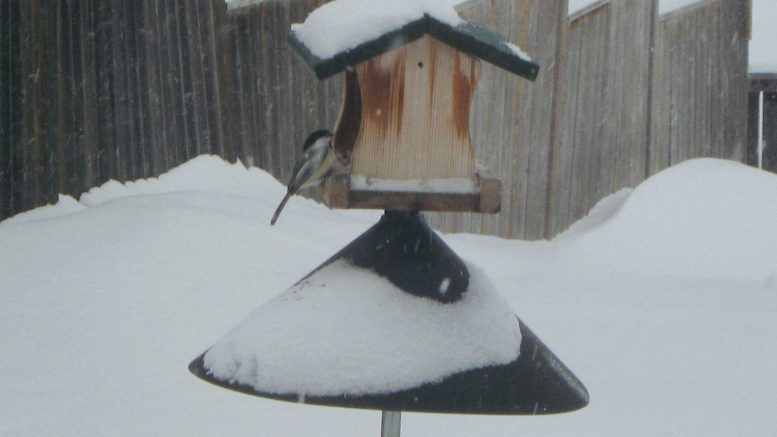As mental health walks gain popularity thanks to the TikTok trend of begrudgingly marching through freezing winter weather in hopes of a serotonin boost, and while mental health resources at the university remain flimsy at best, there is an easy and free activity that may cause genuine delight in the current humdrum climate students inhabit: birding.
Birding, also colloquially known as birdwatching, is a fun activity that can easily be taken on by the most novice of enthusiasts. In fact, it can be done from the comfort of a dorm room, so long as there is a window and a bit of greenery to look at.
Birding is, simply put, observing and identifying species of birds in their natural habitat, either by physically seeing the feathered creature or hearing calls such as the abrasive honk of a Canada goose or, more jarringly, the trumpeting shriek of a blue jay.
In the hopes of seeing the non-migratory white-breasted nuthatch be rejoined by feathered kin from southern travels, now is a perfect time to start birding.
If the view from a window does not suffice, birding is a great option during a mental health walk or a planned outing.
While your eyes and ears are your best assets in the birding world, a pair of binoculars is a step up. Of course, if binoculars are out of the crunched-budget price range, your smartphone can be your binoculars — you can point and enlarge the image on any feathered friend you might see high up in a tree.
For the expert birder, a digital camera is sometimes better than binoculars, as you can zoom in and take photos of the birds you see. However, this can also be done by a novice on a smartphone, especially if you don’t know the species of bird offhand — a photograph of a bird can go a long way toward identifying it through its coloured plumage.
For identification resources, the Merlin Bird ID app by Cornell University’s lab of ornithology is available on smartphones and is arguably the best tool for the novice birder.
Not only does it list the seasonal birds in your area, but the friendly and easy-to-use interface helps you identify birds from Cornell’s expansive archival information using bird location, the date the bird was seen, its size, the plumage colour and what the bird was doing — from eating at a feeder to sitting on a fence.
Merlin Bird ID is also the best field guide for identifying birds by their song. A recording app — or the standard camera app on your smartphone — can assist you in getting a good aural sample of the birdsong to compare to the countless recordings in the app.
In fact, the app boasts samples of a bird’s every song and call, meaning the black-capped chickadee can be identified not only by its classic “chick-a-dee-dee-dee” but also from its “fee-bee” and twittering calls.
For birding resources out in the field, FortWhyte Alive is a convenient, local and, most importantly, free resource. From the backyard birding guide to the birding checklist, the online package they provide includes helpful prompts of what birds are seasonal to Manitoba.
Moreover, the birding checklist also identifies “accidental” — rare or non-native birds — with a phone number to report the sighting to. This information is important because ornithologists will use amateur birder sightings to track the health of birds and document if birds are changing their habitat because of external conditions such as climate change.
For those interested in birding as a steady constant of mental health aid or as a hobby, the Birds of Canada: Field Guide is a fantastic book for beginners. The book contains a place to record the date and location of birds sighted on every page, as well as different bird profiles.
Though the Merlin Bird ID app is mostly helpful with bird identification, sometimes a cross-reference with a physical field guide helps determine who’s who by slight difference in plumage — where the female house sparrow and female house finch look similar in appearance, the physical guide will explicitly make note via profile that the female house sparrow has one white wing bar where the house finch has two.
Birding is intended to be a stress-free serotonin boost. It can be a solo venture or a fun outing with friends. With cheerful feathery faces awaiting you, there is never a time like the present to explore the inhabitants of parks — and ponds and lakes come springtime — while getting fresh air and exercise.
An activity that can be done completely free of charge and even from the comfort of your own home, birding brings you back to nature and out of your own busy schedule, if only for a few moments in a day.





